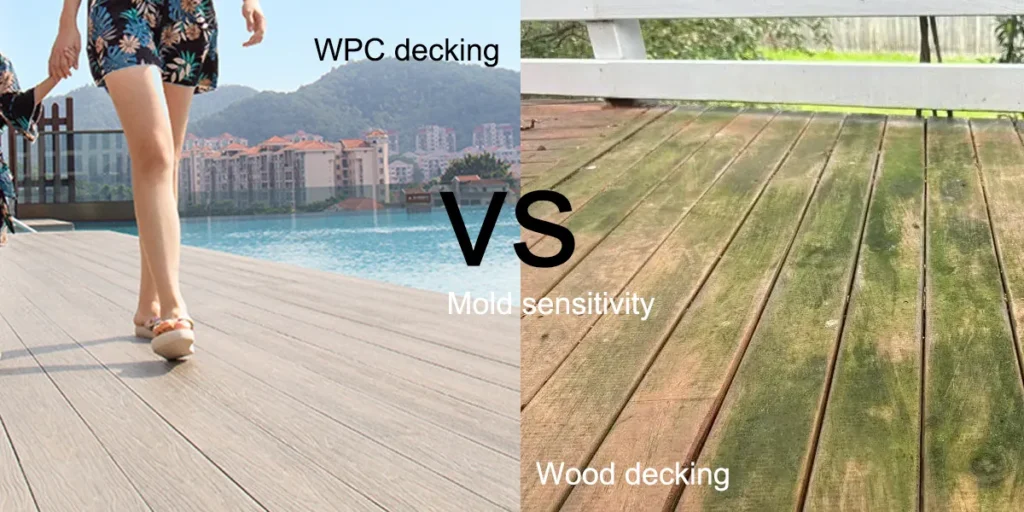WPC (Wood Plastic Composite) decking and traditional wood decking have different susceptibilities to mold and mildew due to the differences in their materials and construction. Understanding how each type of decking responds to moisture and fungal growth is crucial for maintenance and longevity.

WPC Decking’s Susceptibility to Mold and Mildew
WPC decking is designed to be more resistant to moisture and, by extension, mold and mildew than traditional wood decking. The plastic content in WPC decking helps to repel water and moisture, which are the primary catalysts for mold and mildew growth. However, it’s important to note that while WPC decking is more resistant to these issues, it is not completely immune. Mold and mildew can still grow on WPC decking, especially in areas with high moisture levels and limited sunlight. The growth typically occurs on the surface, where pollen, dirt, and other organic materials can accumulate and retain moisture.
Traditional Wood Decking’s Susceptibility to Mold and Mildew
Traditional wood decking is more susceptible to mold and mildew compared to WPC decking. Wood is a natural material that absorbs moisture, creating an ideal environment for mold and mildew to grow, especially in shaded areas that do not dry out quickly. The susceptibility varies with the type of wood and whether it has been treated with water-repellent preservatives. Even with treatment, regular maintenance is required to protect wood decking from moisture and to prevent the growth of mold and mildew.
Maintenance and Prevention
WPC Decking:
- Regular cleaning to remove dirt, debris, and any organic materials that can hold moisture is recommended.
- Proper ventilation and drainage around the deck to prevent water accumulation.
- Although less frequent, applying a mold inhibitor specifically designed for composite materials can also help prevent mold and mildew growth.
Traditional Wood Decking:
- More intensive and frequent cleaning with specialized wood cleaners to remove mold and mildew.
- Application of water-repellent sealants and stains to protect the wood and reduce moisture absorption.
- Ensuring good air circulation and reducing moisture exposure through proper deck design and maintenance.
Conclusion
While WPC decking offers a more resistant solution to mold and mildew compared to traditional wood decking, it’s not entirely immune. Proper maintenance and care are essential for both types of decking to minimize the growth of mold and mildew. However, the inherent properties of WPC decking mean that, in general, it will require less effort and resources to keep it free from mold and mildew over time. This makes WPC decking an attractive option for those looking for a lower-maintenance, longer-lasting outdoor decking solution.



